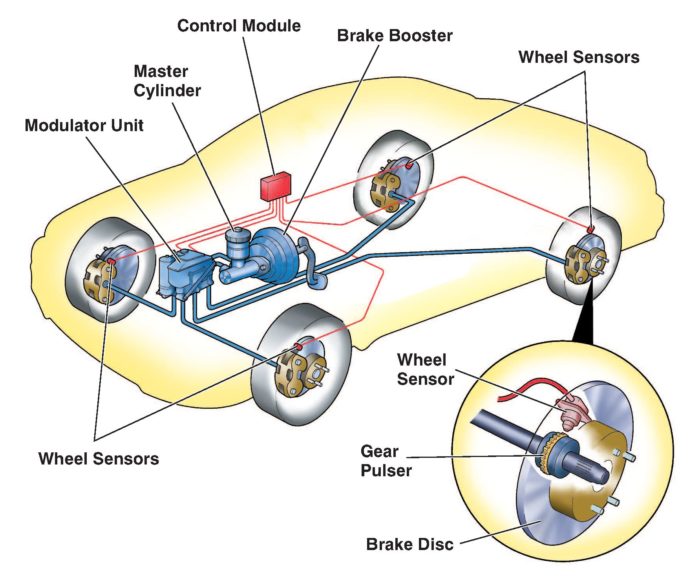What You Need to Know About Anti-Lock Brakes
Many modern vehicles are equipped with anti-lock brakes. Is yours? If so, are you familiar with this aspect of your vehicle? While you don’t have to be a mechanic, it is helpful to understand this system. A basic knowledge of your anti-lock brakes will help you to appropriately handle your vehicle’s braking and give you an understanding of how to troubleshoot problems. Use the following FAQ from a body shop in Walnut, CA to educate yourself on this system.
What are anti-lock brakes?
An anti-lock braking system (ABS) is a safety feature for vehicle brakes. It uses a combination of threshold braking and cadence braking to prevent the wheels from locking up and causing the vehicle to skid when braking.
How do anti-lock brakes work?
ABS lets your tires maintain friction with the road while you brake. It applies the appropriate braking at a much faster rate than a driver can, and with much better control. The sensors involved detect when a wheel tries to lock up and activate hydraulic valves to minimize the braking of that tire. This prevents the skid and keeps the driver in steering control.
What are the benefits of ABS?

With the use of ABS, vehicles are much less likely to skid during sudden stops. To be clear, ABS does not reduce braking times or distances. For dry or wet conditions, the stopping distance with ABS is typically about the same as with traditional brakes. However, ABS allows the driver to maintain control while braking. The wheels won’t skid, so you can continue to steer and brake at the same time. This keeps you in control to prevent the vehicle from sliding into things as you try to stop.
Are there any disadvantages of anti-lock brakes?
While stopping times are typical with ABS in dry and wet conditions, vehicles on gravel, slush and snow require longer stopping distances. The ABS allows the tires to keep spinning (rather than skidding), which means they will stay on top of the non-traction surface and can take longer to stop. If you’re unsure whether ABS is best for you, consult with your body shop in Walnut, CA.
How do I make best use of my ABS?
With old brake systems, drivers were often trained to pump their brakes under certain driving conditions. If your vehicle is equipped with ABS, do not pump the brakes. Keep your foot on the brake pedal until the vehicle has come to a complete stop. Apply constant pressure. To get used to this braking system, consider practicing in an empty parking lot in various weather conditions.
What’s all that rumbling?
Drivers operating a vehicle with ABS can expect to experience noises and vibrations from the system. This does not indicate a problem. It means the ABS is active. You may hear a groaning noise, rapid pulsing or vibration of the brake pedal, or periodic dropping of the brake pedal. These are all part of how the system works.
Where Can I Find out More?
If you have additional questions about anti-lock brakes, don’t hesitate to contact your local body shop in Walnut, CA. The experts at Pete’s Auto Body are ready to assist you. Reach out to us today!
Categorised in: Body Shop
This post was written by

